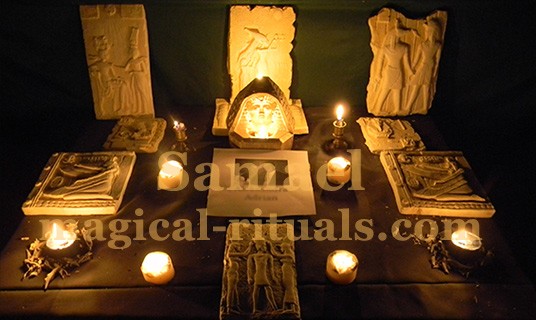
List of egyptian spells
The land of pharaohs, pyramids, and the mighty Nile River, ancient Egypt has long been a cradle of civilization and a source of mystique and wonder. Central to the cultural tapestry of this ancient civilization is the practice of magic, a mystical art deeply intertwined with religious beliefs, daily life, and the quest for divine knowledge. Join us as we unravel the secrets of Egyptian magic, exploring the rituals, symbols, and beliefs that shaped this enchanting tradition.
- The foundations of Egyptian Magic: Ma’at and Isfet
At the core of Egyptian magic lies the concept of Ma’at, the cosmic order and balance that governed the universe. Practitioners of magic sought to align themselves with Ma’at, believing that this harmony was essential for a prosperous and fulfilling life. Conversely, the force of Isfet represented chaos and disorder, against which the magicians and priests of ancient Egypt waged a constant spiritual battle.
- The magical practitioners: Magicians and priests
Magic in ancient Egypt was not solely the province of specialized magicians; rather, it was interwoven into the fabric of religious practices and daily life. Priests, especially those associated with temples, played a significant role in performing magical rituals and spells. Magicians, on the other hand, were known for their expertise in specific magical arts, including divination, healing, and protection.
- Sacred texts and spells: The book of the dead
Perhaps the most famous compilation of magical spells from ancient Egypt is the Book of the Dead. This funerary text, also known as the “Book of Coming Forth by Day,” served as a guide to the afterlife. It contained spells and incantations to ensure a safe journey through the underworld and a favorable judgment before the god Osiris. The intricate illustrations and meticulous instructions highlighted the significance of the afterlife in Egyptian magic.
- Divination and dream interpretation
The ancient Egyptians placed great importance on dreams as a means of communication with the divine. Dream interpreters were revered for their ability to decipher messages from the gods through the symbolism present in dreams. Additionally, divination techniques, such as scrying (gazing into reflective surfaces) and observing the flight of birds, were employed to gain insights into the future and make informed decisions.
- Amulets and talismans: Objects of protection
Amulets and talismans were an integral part of Egyptian magic, believed to harness protective energies and ward off malevolent forces. These magical objects, often crafted in the shape of animals or symbolic hieroglyphs, were worn as jewelry or incorporated into daily life. The famous Eye of Horus, an ancient protective symbol, is one such example of a potent amulet.
- Rituals for healing and protection
Healing rituals were an essential aspect of Egyptian magic, with priests and magicians employing spells and incantations to cure ailments and ward off illness. The goddess Isis, associated with healing and magic, was often invoked in such practices. Additionally, protective rituals were performed to safeguard individuals, homes, and sacred spaces from negative influences.
- The significance of symbolism: Ankh, Scarab, and Djed Pillar
Symbols held immense power in Egyptian magic, each carrying a unique significance and vibrational energy. The ankh, resembling a cross with a loop at the top, symbolized life and immortality. The scarab beetle, an emblem of regeneration, was often used as a protective amulet. The Djed pillar, representing stability and endurance, was associated with the god Osiris and featured prominently in funerary rites.
- Invocation of deities: Connecting with the divine
Central to Egyptian magic was the invocation of deities, with each god and goddess embodying specific qualities and powers. Practitioners would call upon these divine beings to assist in various aspects of life, from love and fertility to protection and wisdom. The rituals involved offerings, prayers, and symbolic gestures to establish a connection between the mortal realm and the divine.
Conclusion
The magic of ancient Egypt remains a captivating and enigmatic aspect of its cultural legacy. Rooted in a profound understanding of the interconnectedness of the natural and supernatural worlds, Egyptian magic was a dynamic force that permeated every facet of life. As we explore the rituals, symbols, and beliefs that shaped this mystical tradition, we gain insight into the rich tapestry of spiritual practices that defined one of the world’s most remarkable civilizations. The echoes of Egyptian magic continue to resonate, inviting us to contemplate the enduring mysteries of the ancient Nile.




